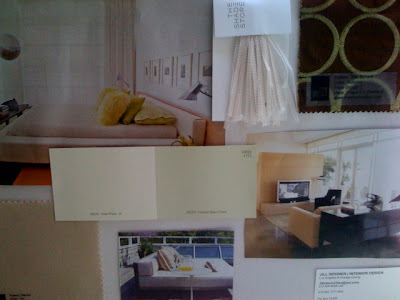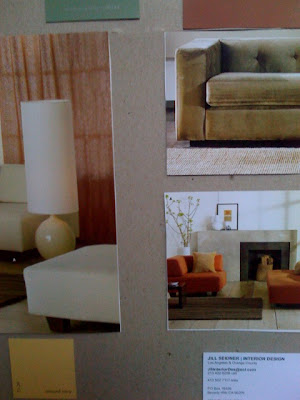




As most of us interior design educated designer’s know – design boards go back to the day’s of our training, in school, pulling late night deadlines for class projects. I think every project I ever did in school required a design board. It was a method of making a presentation to the class about the project, a way to convey and discuss our ideas. Even in the real world of design, design boards are used when making presentations to clients. So to this day – I still find myself pulling together a design board or more loosely a “concept board” or “inspiration board.”
Typically, I will use a mat/cardboard board, a canvas board, or even inexpensive frames. However, in the quest to be environmentally sound I am scraping cardboard from shipping material & other materials – anything I can find to be reused as a design board. As far as the materials, any images whether from books, catalogs, magazines, & online sources can be used for the images on design boards. Finding finish materials – a small knob, pull, fabric samples, paint swatches, wallcovering samples, and many other “found” materials can all be used to simulate a color, pattern, or finish selection.
Here are a few from my own design projects.




No comments:
Post a Comment